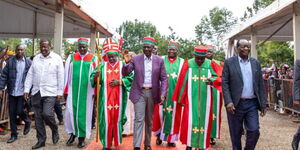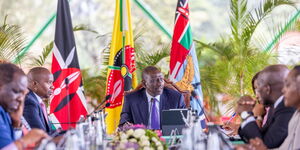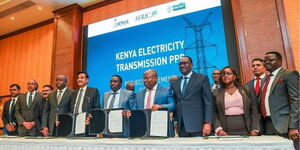In response to the post election violence that followed the December 2007 presidential election leaving thousands dead and over half a million others displaced, the Constitution of Kenya 2010 envisaged a free, fair and transparent election devoid of any manipulation.
On this premise, the Independent Electoral and Boundaries Commission (IEBC) - the body charged with the responsibility of planning and conducting elections in the country - introduced several technologies to safeguard the integrity of future elections.
In the 2013 General Election - the first under the 2010 Constitution dispensation - IEBC introduced two technologies: Biometric Voter Registration (BVR) and Electronic Vote Transmission. The two technologies were positioned to address the problems of accountability and cultivate a culture of trust in the polls body.
However, allegations of hacking and system manipulation in favour of one presidential candidate emerged. This was also the case after the August 8, 2017 presidential election.
The two elections reignited a debate on Kenya’s readiness and ability to use digital technology in elections, with a section of politicians calling for the adoption of a hybrid system that combines both manual and electronic voter identification and results transmission.
Former Information, Communication and Technology (ICT) Permanent Secretary, Prof Bitange Ndemo, opines that the country needs to start building systems that people can trust before fully-adapting technology in voting.
Prof Ndemo argues that creation of systems that can be trusted will elevate the country to a position that the voters themselves will start pushing for electronic voting. Drawing examples from the eCitizen platform, Prof Ndemo adds that the country needs to seal any loopholes that can be exploited by hackers to manipulate the system.
“Using a system like eCitizen, you can apply for your passport and get it without going to queue. It is all about building trust,” he stated.
“You build such trust to the extent where people start saying why don't we just hold elections online and it can work. But because we have not reached that level of trust.”
Prof Ndemo argues that the major problem even with the technology currently being used by IEBC is not on usability but the demonisation by politicians who always want to see it as manipulatable.
“I mean, everybody thinks that every election is stolen. You have to bridge that first gap of trust. This applies even when you know the solution is tamper proof,” he added.
The ICT champion further notes that the technology in the country needs to evolve to the levels of mobile money where people have no trust issues, adding that the country needs to invest more in improving its cybersecurity systems.
Prof Ndemo further opined that the country should also start focusing on the application and usage of blockchain technology in future elections, adding that this can be combined with the Internet of Things (IOT) to make the system more seamless.
“In the case of blockchain and IOT technologies, we explore how voting information and data is gathered, sent to a central place and analyzed,” he stated, adding that “this is going to be faster in terms of transmission and tallying.”
IOT and blockchain utilises Web 3.0 technologies that are built on concepts of decentralization, openness, and greater user utility.
This is more advanced than Web 2.0 which is based on equality of interactivity.
The bottom line, Prof Ndemo says, is fighting for general trust of a fully electronic electoral system












